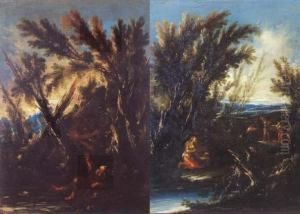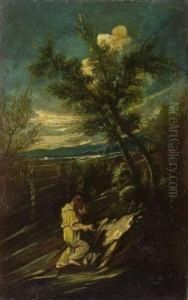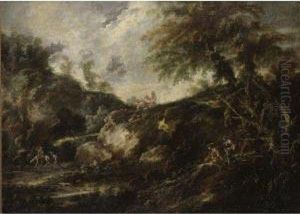Giovanni Peruzzini Paintings
Giovanni Peruzzini, an Italian painter of the Baroque period, was born in Ancona in 1649 and passed away in 1724. Although not as widely recognized as some of his contemporaries, Peruzzini was an accomplished artist who contributed to the rich tapestry of Italian Baroque painting.
Peruzzini received his early training in the workshop of the painter Guercino, a prominent figure in Italian Baroque art. This apprenticeship had a significant impact on the development of his style, which is characterized by dynamic compositions, a strong sense of drama, and a vivid use of color reminiscent of his master.
Throughout his career, Peruzzini painted a variety of subjects, including religious scenes, mythological narratives, and landscapes. His landscapes, in particular, were known for their poetic and often idyllic qualities, blending elements of realism with imaginative composition. He was particularly adept at rendering atmospheric effects and the play of light, which added a lyrical quality to his work.
Peruzzini worked in several cities across Italy, including Rome, where he was influenced by the works of other Baroque painters. His work was appreciated by patrons and collectors, and he received commissions for altarpieces and other religious works for churches, as well as decorative schemes for private residences. Despite the fact that he did not establish a large workshop or have a significant number of followers, Peruzzini's paintings were well regarded by those who sought the elegance and dynamism characteristic of the Baroque era.
Today, Peruzzini's works can be found in various Italian churches and museums, as well as in private collections. While his name may not be as familiar as some of his peers, Peruzzini's contribution to the Baroque period remains a testament to the diversity and richness of artistic expression during this prolific era of Italian art history.


